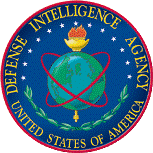United States Department of Defense

United States Department of Defense Military Intelligence
Date of this Version
4-12-1960
Document Type
Article
Citation
CSR 381-1, 12 May 1960
Abstract
This document was issued by the Chief of Staff to prescribe relationships between different officers in the Army staff. Particularly, it was intended to “prescribe relationships between the Assistant Chief of Staff for Intelligence (ACSI), the Deputy Chief of Staff for Logistics (DCSLOG), and the technical Services in the field of intelligence activities.” This is essentially the same as the 1958 version.
It was published as part of an attempt to solve an ongoing organizational problem: how to coordinate the intelligence activities of the US government.
In the 1950s, military intelligence was decentralized. There was no national-level military intelligence agency. In theory, the Chief of Staff and the army general staff directed the activities of the army. However, much of the work of the army was done by the special staff, a set of special-purpose bureaus. Within the special staff, the army technical services – the Army Medical Service, the Corps of Engineers, the Chemical Corps, the Ordnance Corps, the Quartermaster Corps, and the Transportation Corps – supplied the army with weapons and equipment, services, training, and personnel services. They had a long tradition of independence and did not yield to intrusion from the general staff readily. Each of the technical services performed intelligence functions. All were responsible for technical intelligence, that is, intelligence concerning weapons and equipment used by foreign forces. For example, the Ordnance Intelligence Agency was concerned with the small arms, artillery, armored fighting vehicles, and ammunition used by foreign forces. In addition, some had area intelligence functions concerned with the geography, industrial base, infrastructure, agriculture, etc. of foreign countries where US forces might be expected to operate. The Signal Corps Intelligence Agency had been tasked with producing intelligence on the civilian power and communications grids of the Soviet Bloc. The Medical Information and Intelligence Agency produced intelligence about the medical infrastructure, sanitary conditions, epidemiology, etc. in foreign countries. The Corps of Engineers supervised subordinate organizations concerned with mapping and geographic intelligence, foreign ports and harbors, and potential landing beaches.
Since, in theory, ACSI supervised intelligence activities and DCSLOG supervised activities related to supplies and equipment, this directive attempted to spell out the responsibilities of each official and of the chiefs of the technical services.
Organizational conflicts within the army in the 1950s are discussed at length in From Root to McNamara by James E. Hewes, Jr., which is available online at:
http://www.history.army.mil/html/books/040/40-1/index.html
Eventually, the army was radically reorganized in 1962 with the functions of the army technical services redistributed to centralized organizations like the newly created Army Materiel Command. The intelligence functions of the technical services were divided. Technical intelligence responsibilities were transferred to the newly created Army Foreign Science and Technology Center and area analysis functions were transferred to the newly organized Defense Intelligence Agency, Production Center.
Included in
Defense and Security Studies Commons, Military and Veterans Studies Commons, Other Engineering Commons, Peace and Conflict Studies Commons, Soviet and Post-Soviet Studies Commons


Comments
This document is a digital copy of a document loaned to the depositor by the Army Library in the Pentagon in Washington, DC in 1987. The former Army Library is now the Pentagon Library.
This document had an expiration date of 12 November 1961
Since the Army reuses numbers and titles of administrative publications, the date of the publication must be included to unambiguously identify any given administrative document.